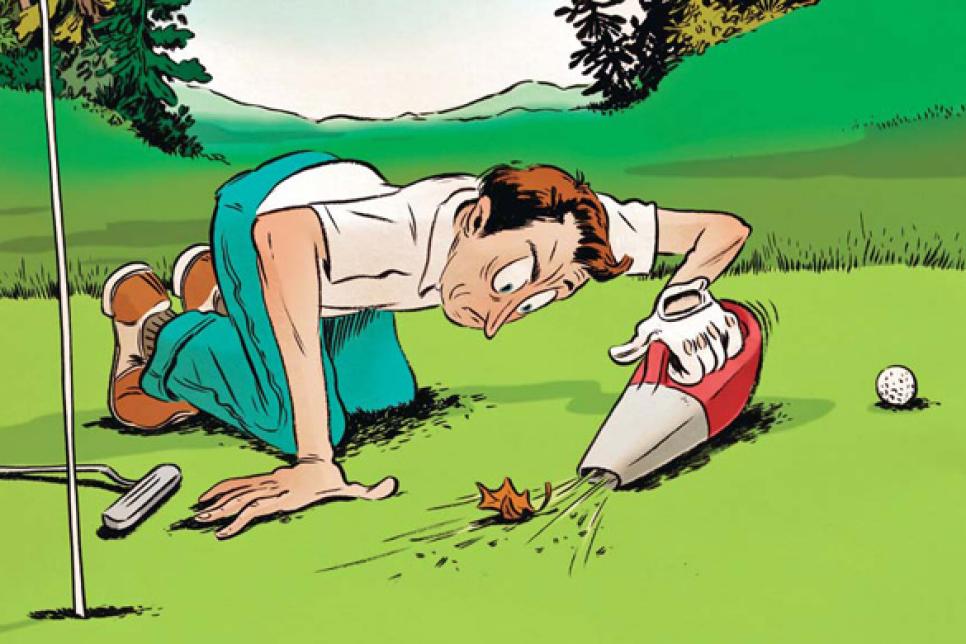Hey, Can I Touch That?

1. DECISION 16-1A/8
It's OK to sweep away loose impediments with your hand, hat, glove (or even a DustBuster). Just remember not to press anything down.
2. RULE 16-1E
It's OK to stand astride or with a foot touching your line of putt when you tap in if you're doing so to avoid interference with someone's line.
3. DECISION 17-1/6
It's OK when tending the flag to place it on the ground and then pick it up to move it if a ball putted from the green might strike it.
4. DECISION 17-1/5
It's OK to remove a flagstick with one hand and tap in with your other hand, provided your ball doesn't strike any part of the flagstick.
5. DECISION 16-1A/12
It's OK if you accidentally step on your line of putt, as long as you don't improve the line.
6. DECISION 17-3/6
It's OK to use a golf shaft to mark the position of a hole when someone is putting, provided that the shaft is treated like a flagstick and removed before being struck by the ball.
7. DECISION 16-1B/1
It's OK to re-mark and lift your ball from the putting green if you think it might move because of strong winds or its position on a slope. You can clean the ball again, too.
8. DECISION 16-1C/4
It's OK to repair spike marks anywhere on the putting green except on your line of putt or if repairing them would assist you or another person playing the hole.
9. Rule 8-2B
It's OK to touch the green on the other side of the hole from where your ball is resting, provided it's not done to indicate a line for putting.
10. Decision 16-2/3
It's OK to "shade" a ball resting on the edge of the hole for up to 10 seconds to get the grass to wilt and the ball to fall in. If your ball goes in after 10 seconds, it's considered holed, but you must add a penalty stroke to your score.
HANDICAPS
Q: My practice-round scores have been steady, but I played really well in two tournaments. My Handicap Index went way down. What gives?
__A: Anyone can have one great tournament round, but to have two or more indicates that a golfer's potential is better than his or her handicap. That's why the USGA implemented Section 10-3, which identifies tournament scores with a "T." If you beat your handicap by at least three strokes in two or more T rounds during a 12-month period, your handicap is adjusted by using those two T scores (plus a correction factor), rather than using only your best 10 of the last 20 scores. For more information, go to usga.org.
__
By DEAN KNUTH, Golf Digest Contributing Editor. Former senior director of the USGA handicap department, Knuth invented today's Course Rating and Slope system.
